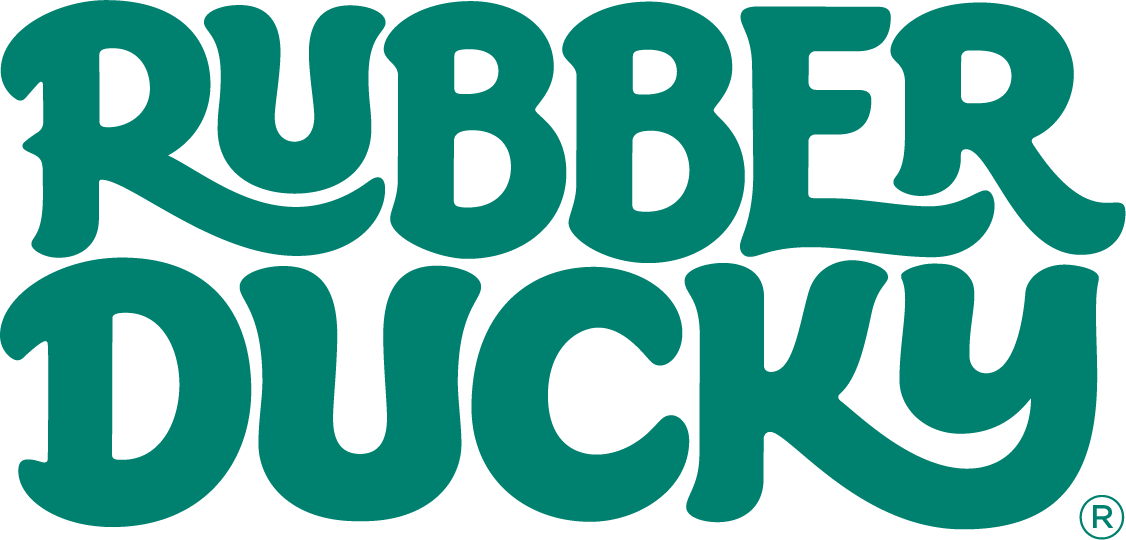A Quack Through Time: The History of Rubber Ducks (and Why We Still Love Them)
Rubber ducks are more than bath-time toys—they’re design icons, pop-culture celebrities, and even the accidental helpers of oceanographers. We’ve scoured museums, archives, and reputable articles to summarize the story of the rubber duck from 19th-century industry to 21st-century spectacle. You’ll find a complete source list at the end of this article so you can dive deeper into any moment that catches your eye.
From Vulcanized Rubber to Bath-Time Buddy
The duck’s story starts with the 19th-century breakthrough of vulcanized rubber, which made rubber durable and moldable for mass manufacturing. Early “rubber ducks” weren’t always bath floaters—some were solid chew toys without squeakers—before evolving into the hollow, floatable friend we recognize today. [1] [2]
Patents, Plastics, and the Classic Silhouette
By the mid-20th century, the duck’s form was being codified in design patents—most notably sculptor Peter Ganine’s 1949 U.S. design patent for a toy duck (often cited as a key milestone in the recognizable modern duck silhouette). Over subsequent decades, manufacturing shifted toward vinyl and other plastics, as seen in plentiful mid-century and post-war examples. [3] [4]
“Rubber Duckie,” A Pop Hit (Yes, Really)
In 1970, Ernie’s Sesame Street song “Rubber Duckie” surprised everyone by reaching No. 16 on the Billboard Hot 100, cementing the duck as a cross-generational pop icon. National Rubber Ducky Day (January 13) is often traced to a Sesame Street calendar note of “Rubber Duckie’s Birthday.” [5] [6]
Science at Sea: The Friendly Floatees
In 1992, a cargo spill set thousands of bath toys (including yellow ducks) adrift in the Pacific. Oceanographer Curtis Ebbesmeyer helped track these “Friendly Floatees,” turning an accident into a famous study of global surface currents and making rubber ducks unlikely science ambassadors. [7] [8]
Monumental Ducks: From Museums to Harbors
Dutch artist Florentijn Hofman transformed the duck into monumental public art starting in 2007. His towering Rubber Duck sculptures floated in harbors from Amsterdam to Hong Kong and Pittsburgh, drawing massive crowds and global press. The spectacle reaffirmed the duck’s universal charm—familiar, funny, and oddly moving at city scale. [9] [10] [11]
Records, Super-Fans, and Cultural Trivia
Rubber ducks inspire devotion. Charlotte Lee set a Guinness World Record for the largest duck collection—5,631 different ducks as of 2011 (profile revisited in 2023). Seasonal celebrations (like National Rubber Ducky Day) and traveling “world’s largest rubber duck” attractions keep the fandom afloat. [12] [13] [14] [15]
Why the Rubber Duck Endures
Design simplicity. One shape; endless personalities.
Nostalgia. A direct line back to childhood.
Playfulness with purpose. From bath safety cues to public art and even oceanography, the duck bridges whimsy and usefulness.
A Sunny Side-Note: Ducks, Beaches, and Safe Fun
Rubber ducks and sunny days just go together. If your bath-time buddy evokes beach-day vibes, a quick reminder: sun safety matters year-round.
- Prefer mineral filters? Explore our Mineral Sunscreen Collection made with zinc oxide and titanium dioxide (often chosen by sensitive-skin users).
- Long days outdoors? Keep your lips protected with our SPF Lip Balm lineup.
- Planning a beach bag? Our Sunscreen Lotion and Spray Sunscreen collections cover face and body needs.
The Takeaway
From vulcanized rubber to viral art, the rubber duck keeps reinventing itself without losing its charm. It’s small, sunny, and instantly understood—a perfect emblem for simple joys, everyday rituals, and, yes, a little science along the way.
Sources & Further Reading
- St Neots Museum — “The history of the rubber duck.” St Neots Museum
- The Rubber Duck Museum — “The Early History of the Rubber Duck.” therubberduckmuseum.com
- Google Patents — Peter Ganine, Design for a Toy Duck (USD153514S, 1949). Google Patents
- Frame-a-Patent (contextual summary of Ganine patent). frameapatent.com
- Wikipedia — “Rubber Duckie” (Sesame Street song) + chart history. Wikipedia
- TIME — “5 Things You Didn’t Know About the Early Days of Sesame Street.” TIME
- Wikipedia — “Friendly Floatees spill.” Wikipedia
- Earth Learning Idea (PDF) — classroom resource on the Friendly Floatees + currents. Earth Learning Idea
- Wikipedia — “Rubber Duck (sculpture)” (Florentijn Hofman’s series, 2007–). Wikipedia
- WIRED — “Giant Rubber Duck’s American Debut Goes Swimmingly” (Pittsburgh). WIRED
- Whitestone Gallery — Hofman’s Double Ducks (Hong Kong 2023). Whitestone Gallery
- National Day Calendar — “National Rubber Ducky Day — January 13.” National Day Calendar
- Guinness World Records — Largest collection of rubber ducks (Charlotte Lee). Guinness World Records
- Guinness World Records News (2023 update on Charlotte Lee). Guinness World Records
- The Sun (travel news) — touring “world’s largest rubber duck” (context for public interest). The Sun


